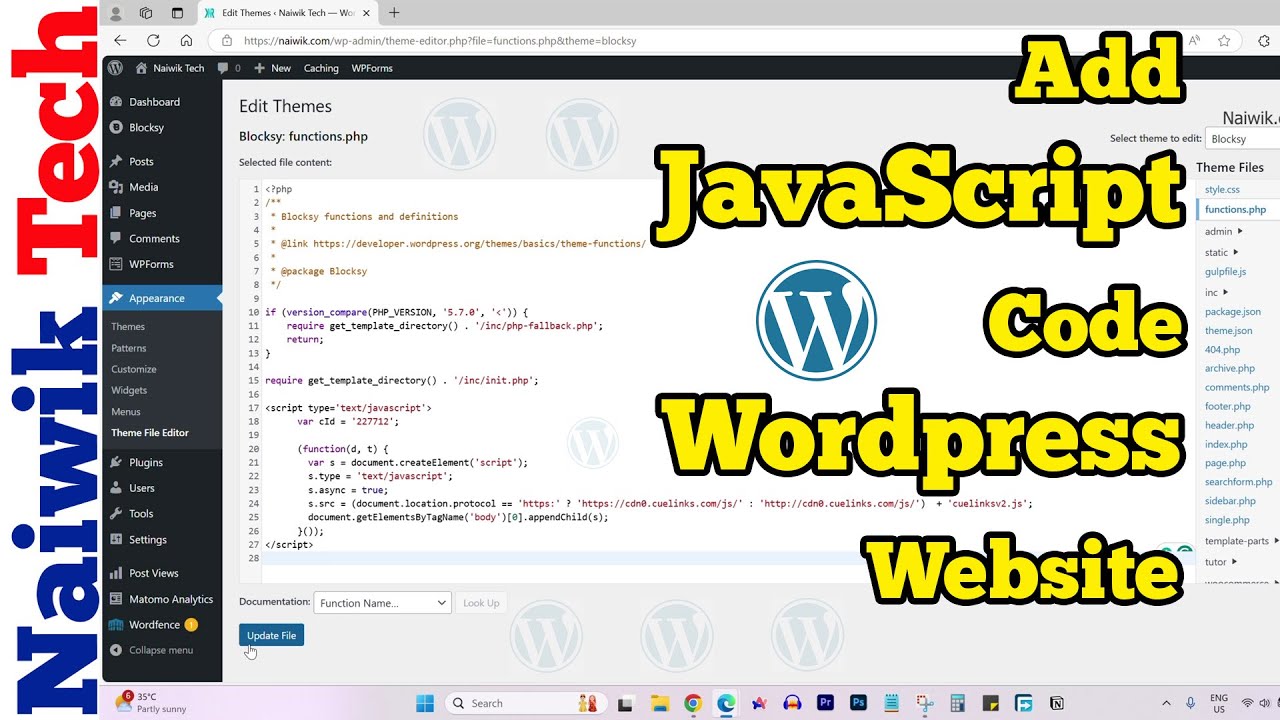Blog
Fix 2,459 Website 404 and Redirect Errors in 5 Minutes AI 🤯 #aiwebsites #aiSEO #googlesearchconsole
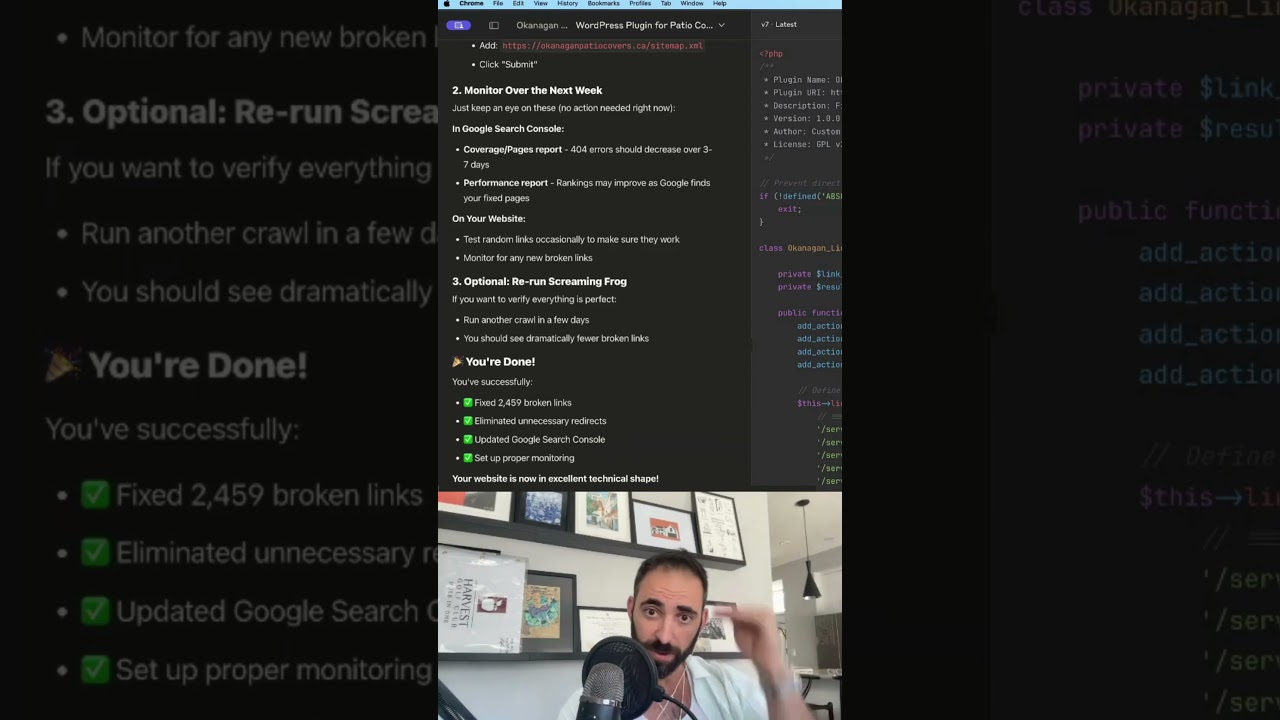
Understanding 404 and Redirect Errors
When managing a website, encountering 404 and redirect errors can be a frustrating experience. These errors not only disrupt user experience but can also negatively affect your site’s search engine optimization (SEO). In this post, we’ll explore effective strategies for identifying and resolving these issues efficiently.
What Are 404 Errors?
404 errors occur when a user attempts to access a page that no longer exists or has been moved without a proper redirect. This can happen due to a variety of reasons, including:
- Deleted Pages: When a page is removed but still indexed by search engines.
- Misspelled URLs: Typographical errors when entering a URL.
- Broken Links: Internal or external links pointing to a nonexistent page.
The Impact of 404 Errors on Your Website
404 errors can lead to a significant decline in user satisfaction. When visitors encounter these errors, they may leave the site, which increases your bounce rate. Furthermore, search engines may devalue your site if they encounter a high number of these errors, negatively affecting your rankings.
Understanding Redirect Errors
Redirect errors occur when a user is redirected to another URL but the redirection is misconfigured. The common types of redirect errors include:
- Redirect Loops: A cycle of redirects that can trap users.
- Missing Redirects: Links that should redirect to other pages but don’t.
- Broken Redirects: Links that fail to navigate users properly.
Why Fixing These Errors is Crucial
Addressing 404 and redirect errors can significantly enhance user engagement and improve your SEO performance. By ensuring all links function properly, you create a seamless browsing experience, leading to increased time spent on your site and lower bounce rates.
Effective Tools for Identifying Errors
Before you can fix these errors, you need to identify them. There are several tools available to assist with this process:
- Google Search Console: This free tool provides insights into your website’s performance, including crawl errors and indexing problems.
- Screaming Frog: This desktop application can crawl your entire site and identify broken links, redirects, and 404 errors.
- Ahrefs: A comprehensive SEO tool that can provide a detailed overview of all your site’s broken links and redirect errors.
Step-by-Step Guide to Fixing 404 and Redirect Errors
1. Audit Your Website
Start by conducting a thorough audit of your website using the tools mentioned above. Generate a list of all the 404 and redirect errors identified. Ensure you categorize them based on their severity and type.
2. Analyze the Errors
Once you have your list, analyze the errors:
- For 404 Errors: Determine whether the page is still relevant or if it can be removed. If it’s still valuable, consider creating similar content.
- For Redirect Errors: Identify the source of the error, such as incorrect URL structure or missing redirect rules.
3. Implement Redirects
For 404 errors that require a proper redirect, implement 301 redirects. A 301 redirect informs users and search engines that the content has permanently moved to a new location. This helps retain any SEO value from the original page.
Example:
plaintext
Redirect 301 /old-page/ http://www.yoursite.com/new-page/
4. Update Internal Links
Ensure that your internal links point to the new or existing pages. This not only improves user navigation but also helps search engines crawl your site more efficiently.
5. Remove or Fix Broken Links
If external links are leading to 404 errors, reach out to the website owners to notify them of the broken links. If that’s not possible, consider finding alternative sources or removing these links from your site.
6. Monitor and Maintain
After fixing the errors, continue to monitor your website regularly. Setting up alerts on tools like Google Search Console can help you catch any new errors as they arise.
Additional Tips for Optimization
-
Create Custom 404 Pages: Instead of a generic 404 page, create a custom page that guides users back to relevant content or suggests popular pages. This can significantly enhance the user experience.
-
Enhance Site Structure: A well-structured URL hierarchy can reduce 404 and redirect errors. Organize your site logically, with clear pathways for navigation.
- Regular Updates: Periodically review your content and links to ensure everything is up to date. This proactive approach minimizes errors.
Conclusion
Resolving 404 and redirect errors is essential for maintaining a user-friendly website and optimizing for search engines. By following the outlined steps and utilizing the suggested tools, you can efficiently fix these issues, ultimately improving both user satisfaction and your website’s SEO performance. Remember, a well-maintained website fosters engagement and can lead to higher conversions, so prioritize regular audits and updates.
Elementor Pro
In stock
PixelYourSite Pro
In stock
Rank Math Pro
In stock
Related posts
Building a WordPress Plugin | Jon learns to code with AI
How to add custom Javascript code to WordPress website
6 Best FREE WordPress Contact Form Plugins In 2025!
Solve Puzzles to Silence Alarms and Boost Alertness
Conheça AI do WordPress para construção de sites
WordPress vs Shopify: The Ultimate Comparison for Online Store Owners | Shopify Tutorial
Apple Ends iCloud Support for iOS 10, macOS Sierra on Sept 15, 2025
How to Speed up WordPress Website using AI 🔥(RapidLoad AI Plugin Review)
Bringing AI Agents Into Any UI: The AG-UI Protocol for Real-Time, Structured Agent–Frontend Streams
Web Hosting vs WordPress Web Hosting | The Difference May Break Your Site
Google Lays Off 200+ AI Contractors Amid Unionization Disputes
MIT’s LEGO: A Compiler for AI Chips that Auto-Generates Fast, Efficient Spatial Accelerators
Products
-
 Rayzi : Live streaming, PK Battel, Multi Live, Voice Chat Room, Beauty Filter with Admin Panel
Rayzi : Live streaming, PK Battel, Multi Live, Voice Chat Room, Beauty Filter with Admin Panel
$98.40Original price was: $98.40.$34.44Current price is: $34.44.In stock
-
 Team Showcase – WordPress Plugin
Team Showcase – WordPress Plugin
$53.71Original price was: $53.71.$4.02Current price is: $4.02.In stock
-
 ChatBot for WooCommerce – Retargeting, Exit Intent, Abandoned Cart, Facebook Live Chat – WoowBot
ChatBot for WooCommerce – Retargeting, Exit Intent, Abandoned Cart, Facebook Live Chat – WoowBot
$53.71Original price was: $53.71.$4.02Current price is: $4.02.In stock
-
 FOX – Currency Switcher Professional for WooCommerce
FOX – Currency Switcher Professional for WooCommerce
$41.00Original price was: $41.00.$4.02Current price is: $4.02.In stock
-
 WooCommerce Attach Me!
WooCommerce Attach Me!
$41.00Original price was: $41.00.$4.02Current price is: $4.02.In stock
-
 Ultimate Post Kit Pro
Ultimate Post Kit Pro
$53.71Original price was: $53.71.$3.69Current price is: $3.69.In stock
-
 Magic Post Thumbnail Pro
Magic Post Thumbnail Pro
$53.71Original price was: $53.71.$3.69Current price is: $3.69.In stock
-
 Bus Ticket Booking with Seat Reservation PRO
Bus Ticket Booking with Seat Reservation PRO
$53.71Original price was: $53.71.$4.02Current price is: $4.02.In stock
-
 GiveWP + Addons
GiveWP + Addons
$53.71Original price was: $53.71.$3.85Current price is: $3.85.In stock
-
 JetBlog – Blogging Package for Elementor Page Builder
JetBlog – Blogging Package for Elementor Page Builder
$53.71Original price was: $53.71.$4.02Current price is: $4.02.In stock
-
 ACF Views Pro
ACF Views Pro
$62.73Original price was: $62.73.$3.94Current price is: $3.94.In stock
-
 Kadence Theme Pro
Kadence Theme Pro
$53.71Original price was: $53.71.$3.69Current price is: $3.69.In stock
-
 LoginPress Pro
LoginPress Pro
$53.71Original price was: $53.71.$4.02Current price is: $4.02.In stock
-
 ElementsKit – Addons for Elementor
ElementsKit – Addons for Elementor
$53.71Original price was: $53.71.$4.02Current price is: $4.02.In stock
-
 CartBounty Pro – Save and recover abandoned carts for WooCommerce
CartBounty Pro – Save and recover abandoned carts for WooCommerce
$53.71Original price was: $53.71.$3.94Current price is: $3.94.In stock
-
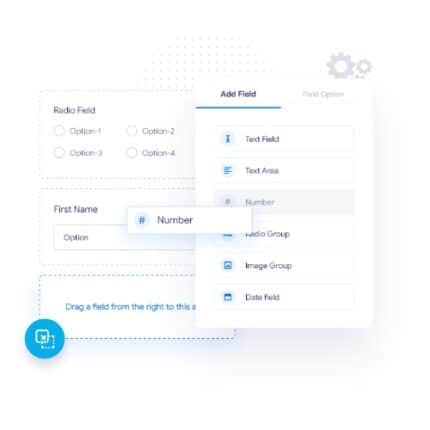 Checkout Field Editor and Manager for WooCommerce Pro
Checkout Field Editor and Manager for WooCommerce Pro
$53.71Original price was: $53.71.$3.94Current price is: $3.94.In stock
-
 Social Auto Poster
Social Auto Poster
$53.71Original price was: $53.71.$3.94Current price is: $3.94.In stock
-
 Vitepos Pro
Vitepos Pro
$53.71Original price was: $53.71.$12.30Current price is: $12.30.In stock
-
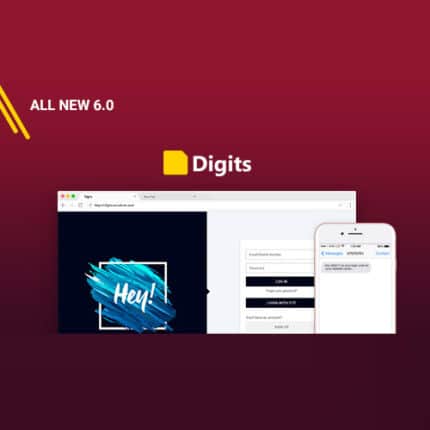 Digits : WordPress Mobile Number Signup and Login
Digits : WordPress Mobile Number Signup and Login
$53.71Original price was: $53.71.$3.94Current price is: $3.94.In stock
-
 JetEngine For Elementor
JetEngine For Elementor
$53.71Original price was: $53.71.$3.94Current price is: $3.94.In stock
-
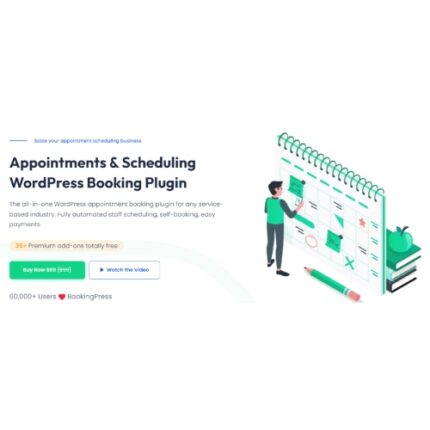 BookingPress Pro – Appointment Booking plugin
BookingPress Pro – Appointment Booking plugin
$53.71Original price was: $53.71.$3.94Current price is: $3.94.In stock
-
 Polylang Pro
Polylang Pro
$53.71Original price was: $53.71.$3.94Current price is: $3.94.In stock
-
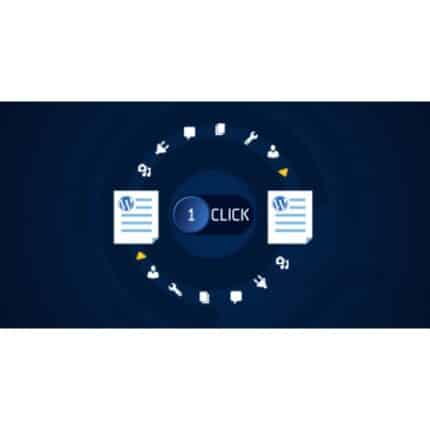 All-in-One WP Migration Unlimited Extension
All-in-One WP Migration Unlimited Extension
$53.71Original price was: $53.71.$3.94Current price is: $3.94.In stock
-
 Essential Addons for Elementor – Pro
Essential Addons for Elementor – Pro
$53.71Original price was: $53.71.$3.94Current price is: $3.94.In stock
-
 Slider Revolution Responsive WordPress Plugin
Slider Revolution Responsive WordPress Plugin
$53.71Original price was: $53.71.$4.51Current price is: $4.51.In stock
-
 Advanced Custom Fields (ACF) Pro
Advanced Custom Fields (ACF) Pro
$53.71Original price was: $53.71.$3.94Current price is: $3.94.In stock
-
 Gillion | Multi-Concept Blog/Magazine & Shop WordPress AMP Theme
Rated 4.60 out of 5
Gillion | Multi-Concept Blog/Magazine & Shop WordPress AMP Theme
Rated 4.60 out of 5$53.71Original price was: $53.71.$5.00Current price is: $5.00.In stock
-
 Eidmart | Digital Marketplace WordPress Theme
Rated 4.70 out of 5
Eidmart | Digital Marketplace WordPress Theme
Rated 4.70 out of 5$53.71Original price was: $53.71.$5.00Current price is: $5.00.In stock
-
 Phox - Hosting WordPress & WHMCS Theme
Rated 4.89 out of 5
Phox - Hosting WordPress & WHMCS Theme
Rated 4.89 out of 5$53.71Original price was: $53.71.$5.17Current price is: $5.17.In stock
-
 Cuinare - Multivendor Restaurant WordPress Theme
Rated 4.14 out of 5
Cuinare - Multivendor Restaurant WordPress Theme
Rated 4.14 out of 5$53.71Original price was: $53.71.$5.17Current price is: $5.17.In stock





